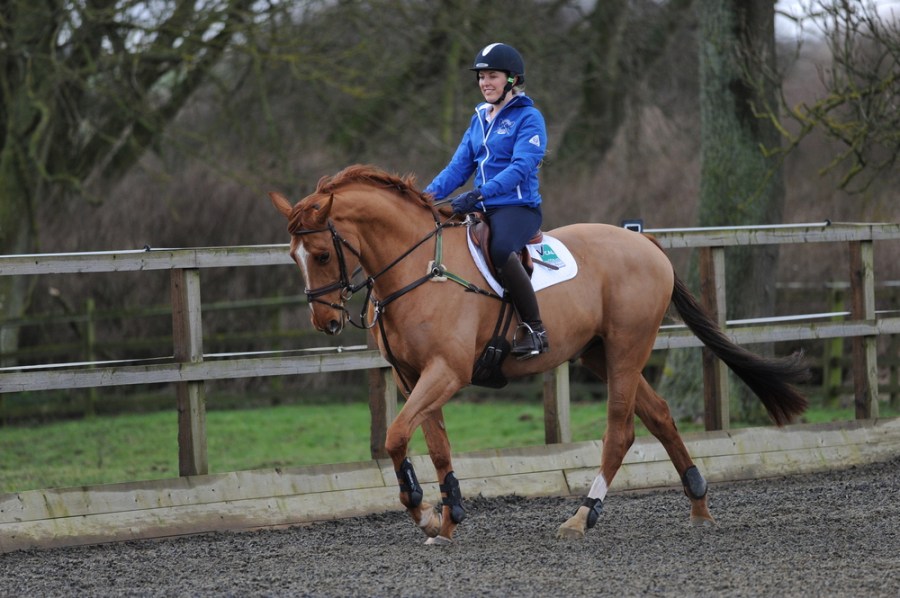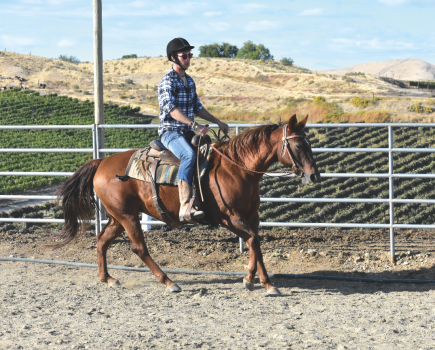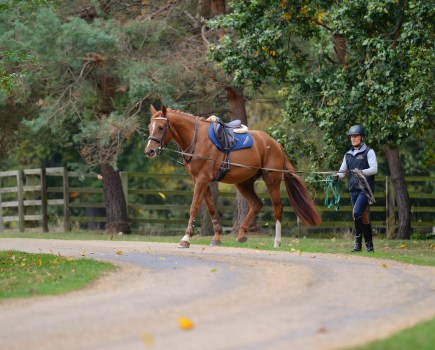Stiffness in the saddle can translate to your horse’s way of going, so it’s important to make sure you’re movement isn’t restricted before you mount up. Dressage rider and trainer Vikki Hayton shares how you can address two common areas of restricted movement: your hips and your upper body.
1 Address your stiff hips
“Horse riding is still a form of exercise, but people often neglect to warm up in preparation,” says Vikki. “As riders, we’re not great at working ourselves in and can often get on our horses feeling stiff. Being crooked or stiffer on one side can have a big impact.”
Doing jobs around the yard is a great way to warm up, but it’s also worth doing stretches to help you limber up.
“Yoga is also great for horse riders,” adds Vikki. “Stretch your legs and your spine and make sure you feel warm before you get on board.”
Your stretching doesn’t have to stop just because you’re in the saddle. Tight hips are common among horse riders, but keeping them flexible can help you to move better with your horse and sit deeper in the saddle.
Try this during your next warm up:
- Ask your horse to halt in the middle of the school. If you’re unsure whether he’ll stand, ask someone to hold him for you.
- Take your right foot out of the stirrup and swing your lower leg back, so that you can grasp your ankle with your right hand with a bend in your knee.
- Gently stretch through your thigh, aiming to bring your foot towards your bottom.
- Hold for a count of 10 and repeat on the other side.
- Repeat this three times with each leg.
2 Tackle limited upper body movement
Being able to move as one with your horse is something we all strive for. If you feel locked in position in your upper body, a small change could be all you need.
“If you’re still in your elbows and shoulders, it can be easy to let your hand position slip, pushing your thumbs out to the side as if you were pushing a shopping trolley,” says Vikki. “Your elbows should be tucked into the side of your body, giving you more elasticity through your arms.”
For the perfect hand position, keep your thumbs on top and your elbows bent. The height of your hands is also important. Too high and you’ll pull the corners of your horse’s mouth, which could make him raise his head. Too low and he may end up leaning on the bit.
The ideal height all depends on where your horse is at in his training. Less experienced horses will benefit from hands held lower and wider, whereas more experienced ones will respond better if your hands are in line with your hips.
Meet the expert: Vikki Hayton is a British Dressage trainer, judge and rider. She is a UKCC Level 3 coach, British Event trainer, and has her BHSI. She also runs College Farm EC.









